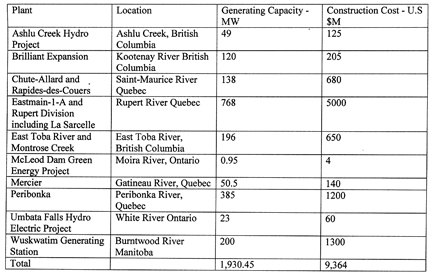Dear Editor,
Please allow me to respond to the article by Mr Christopher Ram in Focus on Guyana’s National Budget 2013 captioned ‘Amaila Falls Hydro – A disaster in the making’ published in the Stabroek News of March 29.
Mr Ram continues on his campaign to denigrate the Government of Guyana by attempting to inflate the true costs of constructing the Amaila Falls Hydro Project. He is grasping at straws in his endeavour to attribute all sorts of additional costs to the project based purely on speculation.
Mr Ram lacks a sense of objectivity in his analysis, since what he has done is to nitpick selectively his information to arrive at the cost of construction of a 165 MW station at US$320 to US$360 million. This works out at an average of US$1.9 to US$2.2 per Watt, which is at the lower end of the cost of constructing this type of plant with existing infrastructure.
A more realistic cost to construct a new Hydroelectric plant is US$5 per Watt, and a 165 MW plant would then work out to be US$825 million. This realistic estimate is US$15 million less than the proposed construction cost of the Amaila Falls Hydro Project, which is US$840M. However, the cost of construction varies depending on location. In the case of the location identified for the Amaila Falls Hydro Project, significant investment in infrastructure development works to access the site is required. How far the cost for this type of plant can vary, based on a study conducted in 2007 in Canada by Hydro Review is explained below.
The November 1, 2007 issue of Hydro Review states that Canada was pursuing more than 25 new hydro projects totalling more than 2,500 MW at a cost of more than US$15.6 billion. That is equivalent to US $6.24 per Watt and based on inflation and compounding over 5 years the cost would be US $6.81 per Watt. Thus if started today, the cost would be more than US $17.025 billion. Extrapolating those values, the 165 MW Amaila Falls Hydro Project should cost US $ 1.123 billion.
Hydro Review examined 15 hydro projects across various provinces in Canada. The complexity of some of the projects allowed for only 10 to be summarized in the table below:

Canada is a highly developed country with one of the strongest economies in recent times. It has highly developed transport infrastructure of various kinds, thus ensuring easy access to the various locations. The Amaila Falls Hydro Project is a first for Guyana in terms of construction and production of power generation of this magnitude, and is being done in the remote parts of Guyana where a road network infrastructure is mostly at a primary stage or non-existent. Guyana has the potential to produce over 5000 MW of hydroelectric power and the Amaila Falls Hydro Project is a stepping-stone to energy independence.
Mr Ram further compared the cost of a hydrocarbon-powered plant at US$1 per Watt, but failed to mention that the run life costs as well as the maintenance costs are far greater than the installation cost of a hydrocarbon powered plant. I agree that the accrued interest will inflate the construction cost, but maintenance of a renewable energy source is far less than that of a similar-sized hydrocarbon powered plant.
Guyana, through the Government of Guyana has embarked on a programme to develop its renewable sources of energy to attain energy independence. This also enhances our concern for the environment for which we already have attained global acclamation (LCDS). The Amaila Falls Hydro Project offers far more benefits in terms of developing our manufacturing sector and opens up the possibility of a light-rail overland means of transportation to access interior locations in the future.
Mr Ram seems to be more inclined to remain in the current rut of relying on the hydrocarbon powered plants, where we put ourselves at risk by depending on oil and being saddled with a huge oil bill. This is wrong. Mr Ram has been wrong before when he was discussing the PPP/Civic Manifesto in Stabroek News dated October 26, 2011 in an article titled ‘A mixture of distortions, untruths and misrepresentations.’ In the case of the one laptop per family project, Mr Ram commented that the Lenovo computer technology was not tested. I wish to state that Lenovo actually bought the computer division of IBM in 2005. The IBM computer technology is definitely tested and proven. Lenovo is simply a new brand name appended to the IBM computer technology.
I find it extremely disappointing when people try to score cheap political points by merely speculating and not conducting the requisite research on the subject they want to discuss. Mr Ram seems bent on misleading the Guyanese public in his attempts to discredit the Government of Guyana in its pursuit of projects that will enrich the lives of Guyanese.
Yours faithfully,
David Gopaul




